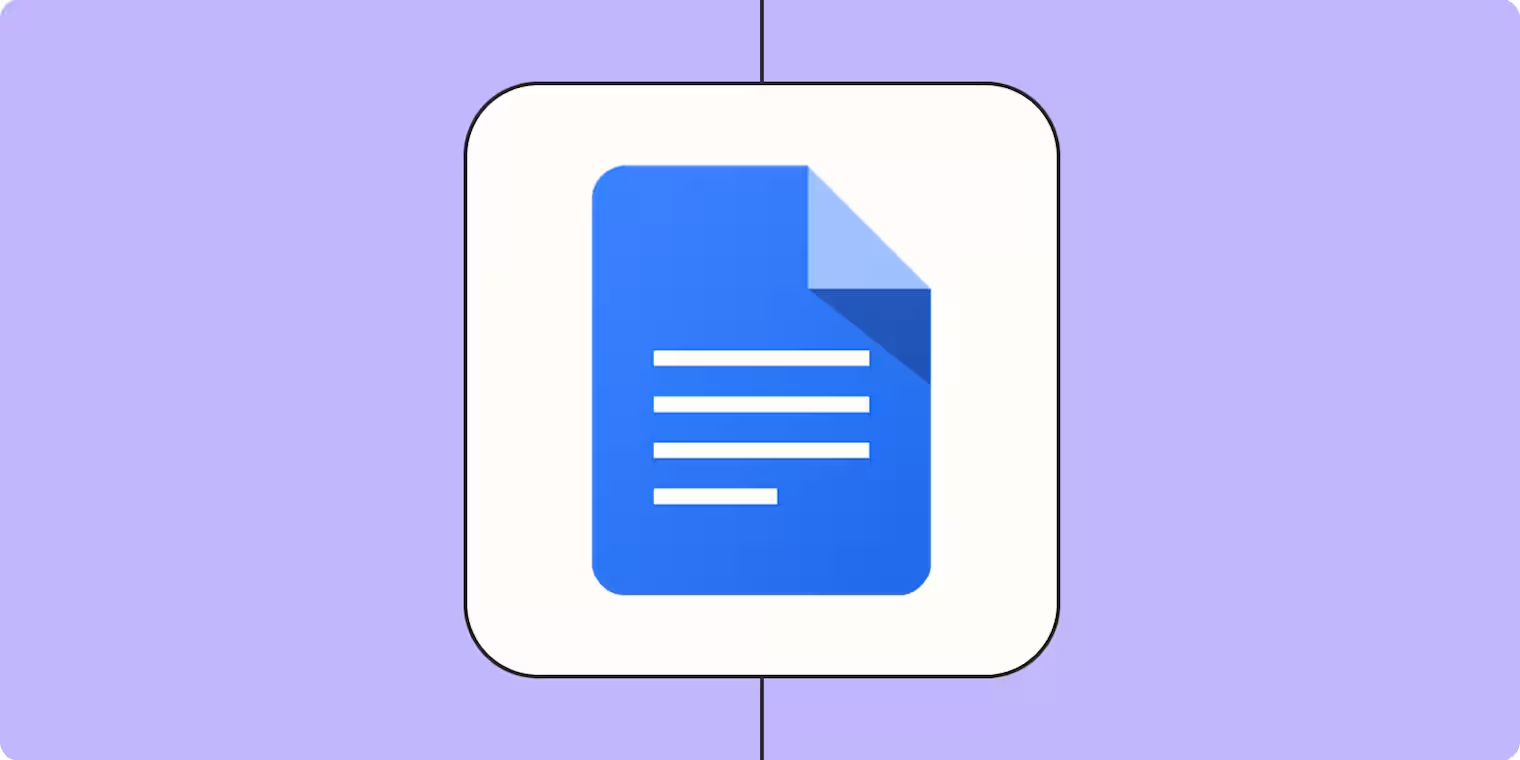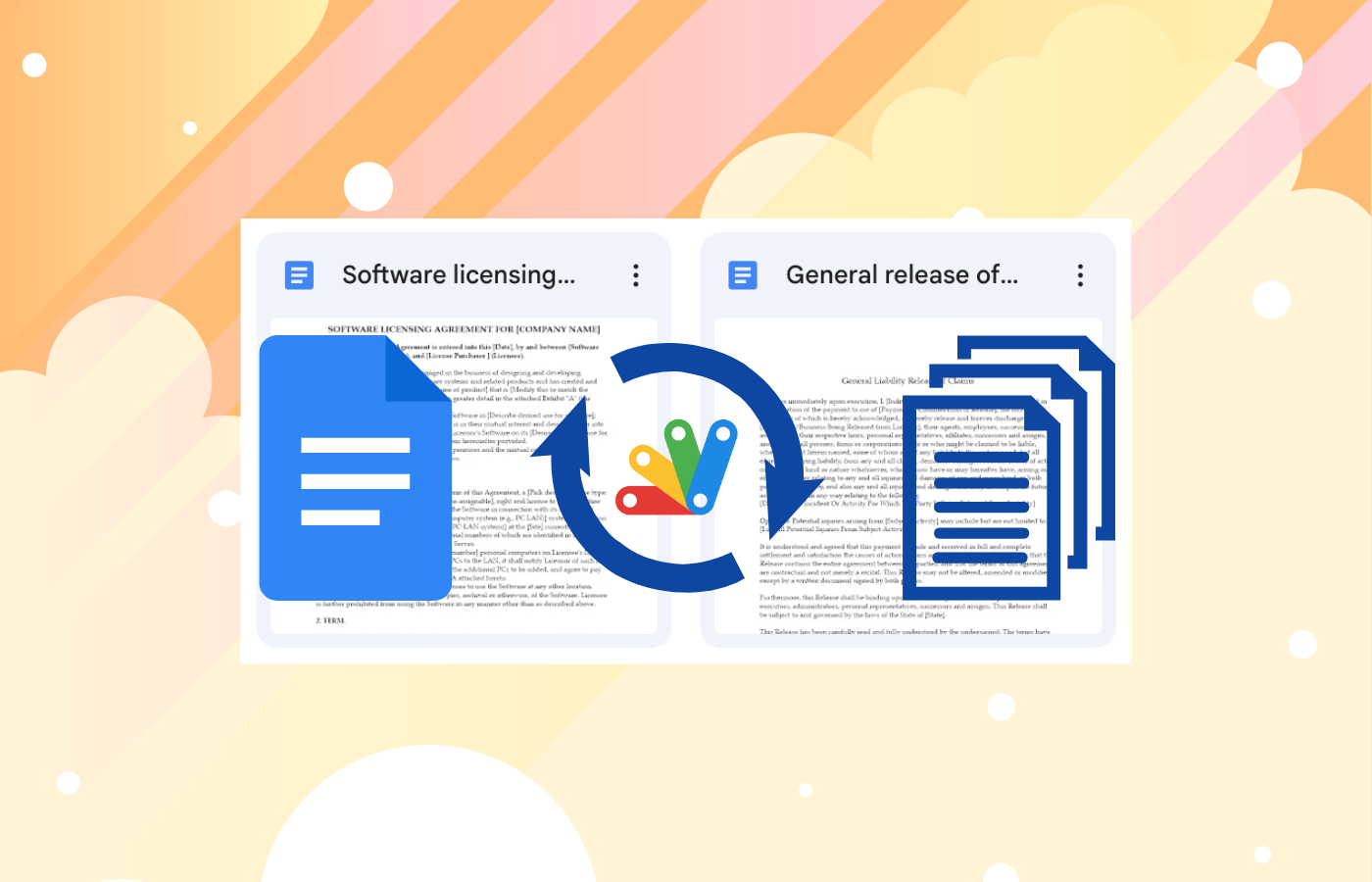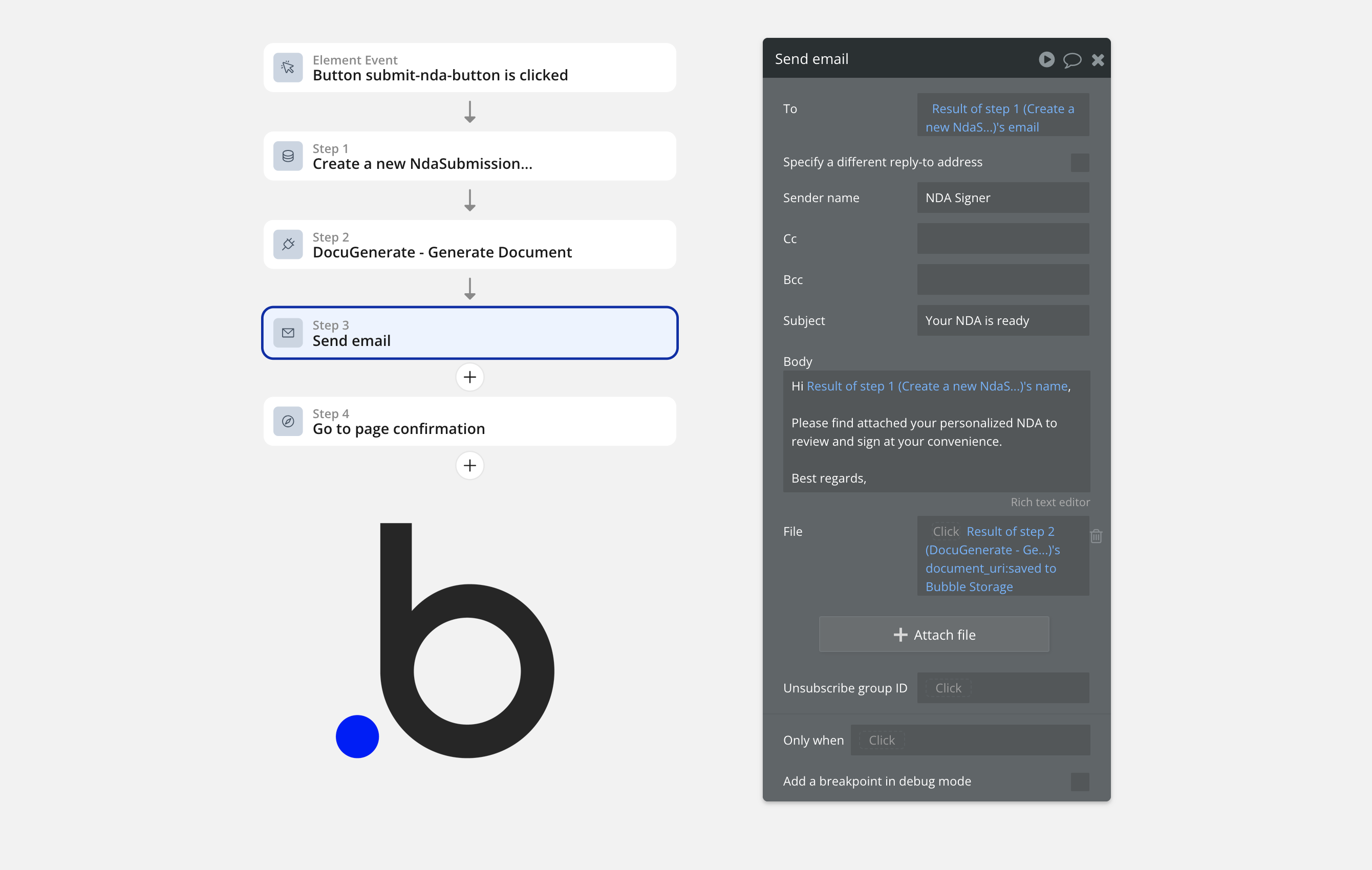Introduction
Document generation is a critical process for businesses across industries. Whether you’re creating invoices, contracts, certificates, or reports, the ability to efficiently transform data into professional documents can save countless hours and reduce human error. Two popular approaches for document generation are using Google Docs with its API, and specialized document generation platforms like DocuGenerate.
While both solutions can create documents from templates and data, they differ significantly in their approach, complexity, and capabilities. Google Docs offers a familiar interface and powerful collaborative features, but requires programming knowledge to automate document generation beyond simple text replacement. DocuGenerate, on the other hand, is purpose-built for document automation and offers declarative template-based generation without the need for complex coding.
In this comprehensive comparison, we’ll explore the strengths and limitations of each approach, helping you determine which solution best fits your document generation needs. We’ll examine everything from template creation and data handling to advanced features like dynamic lists, tables, and image insertion.
Using Google Docs
Google Docs offers document generation capabilities through its API, which allows developers to programmatically create and modify documents. The process typically involves several steps:
1. Template Creation: You start by creating a template document in Google Docs with placeholder text that will be replaced with actual data.

2. Document Duplication: When generating a new document, you must first create a copy of the template using the Google Drive API’s files.copy method.
3. Text Replacement: After copying the template, you use the Google Docs API’s batchUpdate method with ReplaceAllTextRequest to replace placeholder text with real data.
4. Document Retrieval: Finally, you retrieve the completed document for distribution or storage.
Here’s what a typical Google Docs API workflow looks like:
let date = new Date();
let requests = [
{
replaceAllText: {
containsText: {
text: '{{customer-name}}',
matchCase: true,
},
replaceText: 'Alice'
},
},
{
replaceAllText: {
containsText: {
text: '{{date}}',
matchCase: true,
},
replaceText: date.toDateString(),
},
},
];
google.options({auth: auth});
google
.discoverAPI(
'https://docs.googleapis.com/$discovery/rest?version=v1&key={YOUR_API_KEY}')
.then(function(docs) {
docs.documents.batchUpdate(
{
documentId: 'DOCUMENT_ID',
resource: {
requests,
},
},
(err, {data}) => {
if (err) return console.log('The API returned an error: ' + err);
console.log(data);
});
});
Google Docs Limitations
While Google Docs is incredibly powerful for document collaboration and editing, it has several limitations when it comes to automated document generation:
-
Simple Text Replacement Only: The Google Docs API primarily supports basic text replacement operations. You can find and replace placeholder text with actual values, but creating dynamic content structures requires programming.
-
Limited Template Logic: Google Docs templates cannot contain conditional logic, loops, or dynamic structures within the template itself. All logic must be implemented in your application code.
-
Image Handling Complexity: While you can insert images using the API, images must be publicly accessible via URL, and you need to manage image positioning and resizing through code rather than template markup.
-
Multi-Step Process: Every document generation requires multiple API calls - first to copy the template, then to perform replacements, and potentially additional calls for complex formatting or structure modifications.
-
Technical Expertise Required: Implementing Google Docs-based document generation requires significant programming knowledge and understanding of both the Google Docs API and Google Drive API.
Using DocuGenerate
DocuGenerate takes a fundamentally different approach to document generation. Instead of requiring imperative programming to modify documents, it uses a declarative template system where all the logic and structure are defined directly within the template itself.
- Template-Centric Design: With DocuGenerate, you create your templates using familiar Word documents and embed merge tags directly in the template. These tags define not just
-
simple text replacements, but also complex data structures like lists, tables, and conditional content.
-
Single API Call: Document generation happens with a single API call or through the web interface. You provide your template ID and data, and DocuGenerate handles all the processing, formatting, and generation internally.
- Rich Data Structure Support: DocuGenerate natively supports complex data structures including dynamic lists, tables, conditional content, image insertion, QR codes and advanced formatting.
Here’s how simple DocuGenerate’s approach is:
const date = new Date();
const response = await fetch('https://api.docugenerate.com/v1/document', {
method: 'POST',
headers: {
'Authorization': 'YOUR_API_KEY',
'Content-Type': 'application/json'
},
body: JSON.stringify({
template_id: 'TEMPLATE_ID',
data: {
"customer-name": "Alice",
"date": date.toDateString()
},
output_format: '.pdf'
})
});
const document = await response.json();
console.log('Document generated:', document.document_uri);
Feature-by-Feature Comparison
To help you understand the practical differences between Google Docs and DocuGenerate for document generation, we’ve broken down the key features into four main categories. Each comparison table highlights how the two platforms handle essential aspects of document automation, from template management to output quality.
Template Creation and Management
| Feature | Google Docs | DocuGenerate |
| Template Creation | Templates created in Google Docs interface | Templates created in Microsoft Word or uploaded as DOCX files |
| Placeholder Syntax | Simple text strings using the double-brace delimiters syntax | Rich merge tag syntax supporting complex data structures and custom delimiters |
| Version Control | Google Docs revision history | Built-in template versioning and management |
| Template Management | Managed through Google Drive | Dedicated template library with sharing capabilities |
| Access Control | Google Drive sharing and permissions | Role-based access control for team collaboration |
Data Handling and Integration
| Feature | Google Docs | DocuGenerate |
| Data Processing | Requires custom code to structure and format data | Accepts data in multiple formats: JSON, Excel or CSV |
| Data Preparation | Data must be processed and formatted before API calls | Automatic data type detection and formatting |
| Complex Structures | Limited support without extensive programming | Native support for nested data structures |
| Data Type Handling | Each data type requires different API handling | Unified handling for all data types |
| Platform Integration | Built-in integrations with all major platforms | Built-in integrations with Zapier, Make, Bubble and more |
Dynamic Content Generation
| Feature | Google Docs | DocuGenerate |
| Dynamic Lists | Requires programmatic lists manipulation | Dynamic lists created with simple template syntax |
| Variable Tables | Complex API calls needed to insert and format tables | Tables generated automatically from data arrays |
| Conditional Content | Application logic required to determine what to include | Conditional sections defined directly in templates |
| Image Insertion | Images must be publicly accessible through the URL | Image handling with resizing and positioning |
| Feature | Google Docs | DocuGenerate |
| Native Format | Google Docs format | Multiple output formats: PDF, DOCX, DOC, ODT, TXT, HTML, PNG |
| Export Options | PDF, DOCX, ODT, RTF, TXT, HTML, EPUB | Single-step conversion to target format |
| Output Quality | Depends on Google’s conversion algorithms | High-fidelity generation maintaining original formatting |
| Consistency | Variable quality across different export formats | Consistent output quality across all formats |
| Advanced Features | Limited control over final formatting and layout | Advanced PDF features like merging with existing files |
Integration with No-Code/Low-Code Platforms

No-code and low-code platforms like Zapier have revolutionized how businesses automate document generation workflows. These platforms allow users to create sophisticated automation without writing code, making document generation accessible to non-technical team members. However, the integration experience varies significantly between Google Docs and DocuGenerate, particularly when it comes to template flexibility and merge tag handling.
Zapier’s Google Docs integration demonstrates both the power and limitations of using Google Docs for automated document generation. As detailed in Zapier’s guide on creating and autopopulating Google Docs templates, the platform automatically detects merge tags in your Google Docs templates that use the standard {{ }} syntax.

When you configure your Zap, these placeholders are detected as form fields, allowing you to map data from your trigger app directly to your template without any manual configuration. While this automatic detection feature makes Google Docs integration appear seamless, it creates a significant limitation: you’re locked into using Google’s specific double-brace {{ }} delimiter syntax. This constraint becomes problematic when your templates need to coexist with other systems that might conflict with this syntax, or when you want to use other delimiters that match your organization’s existing conventions.

DocuGenerate takes a more flexible approach to delimiter configuration. While it supports the standard double-brace {{ }} syntax by default, you can customize the delimiters to use any characters that suit your needs, whether that’s square brackets [ ], single braces { }, or even custom strings like angle brackets << >>. The practical impact of this difference becomes clear in complex automation scenarios. With Google Docs, your entire workflow must conform to the double-brace standard, potentially requiring template modifications and careful content management to avoid conflicts.
When to Choose Google Docs vs DocuGenerate
Choose Google Docs For
-
Native Google Workspace Integration: If your organization is heavily invested in Google Workspace and you have existing Google Docs workflows, building on that foundation might make sense.
-
Simple Text Replacement Only: For basic document generation that only requires simple find-and-replace operations without dynamic content structures.
-
Collaborative Template Editing: When multiple team members need to collaborate on template creation and you want to leverage Google Docs’ real-time collaboration features.
-
Custom Document Processing: If you need highly customized document processing logic that goes beyond standard document generation patterns.
Choose DocuGenerate For
-
Complex Document Templates: When your documents require dynamic lists, tables, conditional content, or image insertion.
-
Rapid Implementation: If you need to get document generation working quickly without extensive development effort.
-
Bulk Document Generation: For generating large volumes of documents from datasets (Excel, CSV, JSON).
-
Template Management: When you need version control, sharing, and management features specifically designed for document templates.
-
Multiple Output Formats: If you need to generate documents in various formats (PDF, Word, etc.) from the same template.
Conclusion
Both Google Docs and DocuGenerate offer viable approaches to document generation, but they serve different needs and use cases. Google Docs excels when you need deep integration with Google Workspace and have the technical resources to build custom document generation solutions. However, it requires significant programming expertise and ongoing maintenance for complex document templates.
DocuGenerate, on the other hand, is purpose-built for document generation and offers a more declarative, template-centric approach that reduces complexity and development overhead. It’s particularly well-suited for organizations that need to generate complex documents quickly, integrate with no-code platforms, or manage large-scale document generation workflows.
If you’re currently using Google Docs for document generation and considering DocuGenerate, the migration process is typically more straightforward than you might expect. Your existing Google Docs templates can be converted to Word format and enhanced with DocuGenerate’s merge tag syntax, and this process often reveals opportunities to simplify complex logic that was previously embedded in code.
Resources









